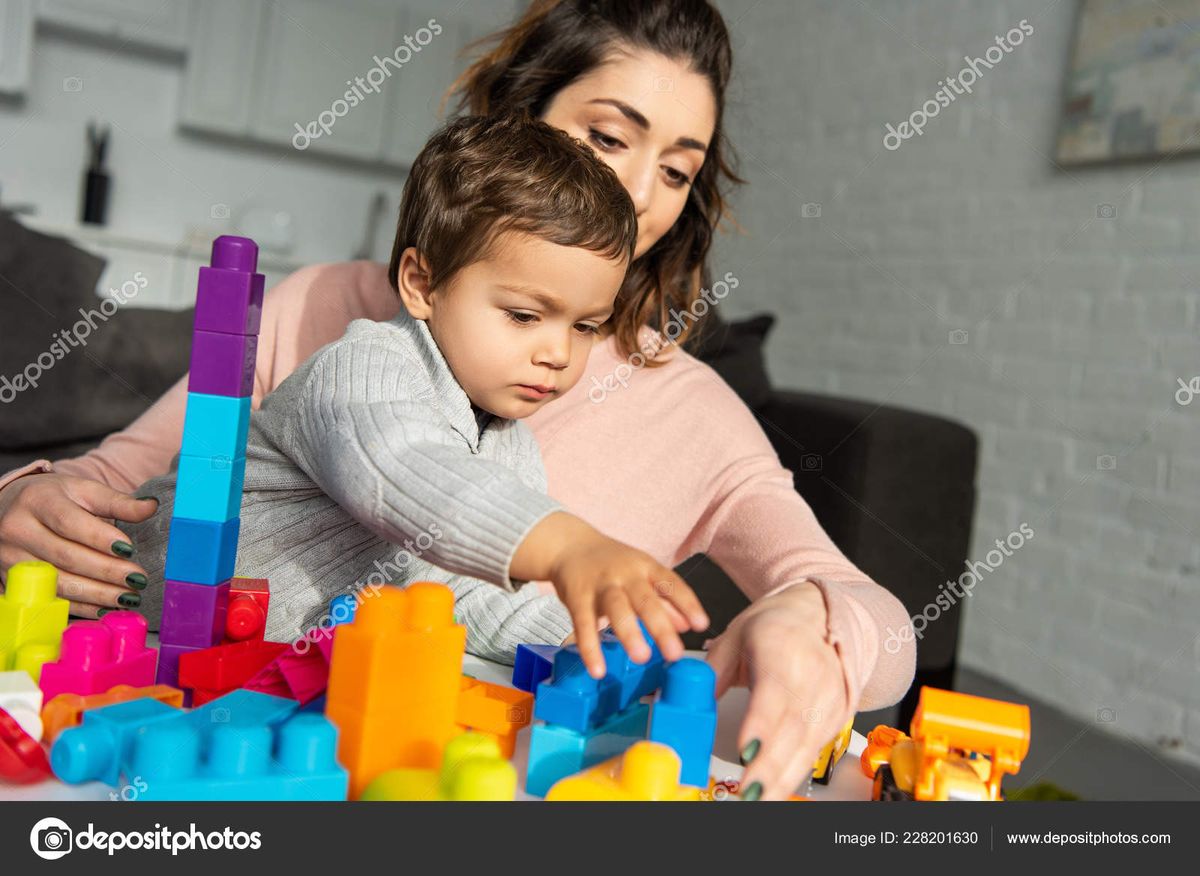
In the journey of parenting and education, understanding child development is paramount. ‘Nurturing Brilliance: Key Insights into Child Development’ offers a comprehensive exploration into the myriad factors that contribute to the growth of young minds. From the interplay between genetics and environment to the creation of enriching spaces that foster learning, this article delves into the essential elements that shape a child’s formative years. It seeks to provide parents, educators, and caregivers with the knowledge and tools necessary to support and enhance the innate potential within every child.
Key Takeaways
- Recognizing the significance of key developmental stages and the dynamic interaction between genetics and environment is crucial for child development.
- Creating environments that stimulate learning and integrating nature into daily routines can profoundly impact a child’s cognitive and emotional growth.
- Understanding the brain-child connection through neuroscience can lead to effective strategies for nurturing brain development and addressing neurological challenges.
- Cultivating resilience and independence in children involves building emotional strength through positive relationships and fostering a sense of self-sufficiency.
- Tailoring education to individual needs requires acknowledging diverse learning styles and personalizing experiences to empower children in their educational journey.
The Foundations of Child Development

Understanding Key Developmental Stages
Recognizing the unique journey of each child is essential in nurturing their growth. Children develop at varying rates, and understanding these individual pathways is crucial for effective parenting. Here are the seven key developmental areas to focus on:
- Physical growth
- Emotional maturity
- Social skills
- Language and communication
- Cognitive abilities
- Creative expressions
- Moral understanding
It’s important to evaluate your child’s capabilities and challenges within these areas. Creating an environment tailored to your unique child means meeting them where they are, not where they are "supposed" to be. This approach fosters resilience and self-assurance, as children learn best from a base of secure and loving relationships.
All children are competent learners from birth, capable of being resilient, self-assured, and independent.
Remember, there is no one-size-fits-all approach to parenting. As children progress through different stages, they encounter distinct challenges and opportunities. By staying informed and adaptable, parents can ensure their parenting evolves with their children’s development.
The Role of Genetics and Environment
The intricate dance between genetics and environment shapes the trajectory of a child’s development. Genetics provide the blueprint, encoding the potential for various traits and abilities. However, it is the environment that either nurtures or stifles this potential. A child’s surroundings, from the warmth of family relationships to the quality of education and nutrition, play a pivotal role in their growth.
Environment influences are multifaceted, including:
- Socioeconomic status
- Cultural background
- Access to healthcare
- Exposure to stress and discrimination
Each child is unique, and understanding their individual context is crucial for fostering optimal development.
Recognizing the interplay of these factors is essential for parents and educators alike. By creating supportive and enriching environments, we can help unlock the brilliance within each child, guiding them towards a path of lifelong learning and well-being.
Cultivating Emotional and Social Intelligence
Emotional and social intelligence are critical components of a child’s development, shaping their ability to interact with others and manage their own feelings. Parents play a pivotal role in nurturing these skills by creating environments that encourage children to express themselves and understand their emotions.
Emotional intelligence involves recognizing and regulating emotions. Parents can aid this process by:
- Validating their child’s feelings
- Teaching coping mechanisms
- Modeling healthy emotional expression
Social intelligence is fostered through:
- Encouraging cooperative play
- Facilitating group activities
- Promoting empathy and understanding
Within nurturing environments, children learn to navigate their emotions and build relationships. They gain confidence and self-respect, learning to express themselves in acceptable ways.
Embracing practices such as mindfulness and self-compassion can further enhance a child’s emotional and social intelligence. By being present and non-judgmental, children learn to manage their thoughts and feelings, creating a foundation for healthy emotional and social development.
Creating Enriching Environments

Designing Spaces for Optimal Learning
Creating an environment conducive to learning is a critical aspect of nurturing a child’s development. The layout, design, and atmosphere of a learning space can significantly influence a child’s ability to focus, engage, and absorb information.
It’s essential to consider the following elements when designing spaces for optimal learning:
- Comfort: Ensure that furniture is ergonomically designed to support the child’s posture and that the room temperature is regulated for comfort.
- Lighting: Utilize natural light as much as possible and provide adequate artificial lighting to reduce eye strain.
- Color: Incorporate calming colors that enhance concentration and minimize distractions.
- Organization: Keep the space tidy and organized with clearly defined areas for different activities.
- Resources: Equip the space with a variety of materials that cater to different learning styles and encourage exploration.
A well-designed learning environment not only supports academic growth but also promotes emotional and social development. By carefully considering the needs of children, we can create spaces that are both functional and inspiring, paving the way for a lifetime of learning.
Incorporating Nature into Daily Activities
Integrating nature into daily routines is more than a practice; it’s a lifestyle that can significantly enhance a child’s development. Children thrive when they are exposed to the natural world, as it stimulates their senses, fosters creativity, and promotes physical activity.
- Begin the day with a mindful moment, perhaps a short walk or meditation in a garden, to align with the natural rhythm of the day.
- Encourage mindful breathing exercises outdoors, allowing the fresh air to rejuvenate both mind and body.
- Visualization and intent setting can be practiced under the morning sky, helping children manifest their goals for the day.
By starting the day with gratitude for nature, children learn to appreciate the environment and develop a sense of well-being that carries through their daily activities.
Incorporating elements such as plants, water, or even a small sandbox in play areas can create a connection with nature that is both grounding and educational. Regular interaction with nature not only nurtures a child’s curiosity but also instills a lifelong respect for the environment.
The Impact of Technology on Young Minds
The digital age has ushered in a new era of learning and exploration for children. Technology, when used appropriately, can be a powerful tool in extending children’s understanding of the world. It offers a plethora of resources, from interactive books to educational apps, that can make learning more engaging and tailored to individual interests.
- Safe and well-maintained equipment is crucial for children to experiment and solve problems.
- Opportunities to write and record findings encourage active participation and reflection.
- A balance between screen time and other activities is essential to foster a well-rounded development.
The integration of technology in early education should be thoughtful and deliberate, ensuring that it complements rather than replaces hands-on experiences.
While technology can enhance learning, it is important to recognize the need for balance. Excessive screen time can impact social skills and physical health. Therefore, creating an environment that incorporates technology in meaningful ways while promoting other forms of learning and interaction is key to nurturing young minds.
The Brain-Child Connection

Neuroscience and Early Childhood Development
The intricate dance between brain development and early experiences is pivotal in shaping a child’s future. Neuroscience reveals that the brain’s architecture is constructed through an ongoing process that begins before birth and continues into adulthood. This process is influenced by a variety of factors, including genetics, environment, and daily interactions.
Neuroplasticity, the brain’s remarkable ability to reorganize itself by forming new neural connections throughout life, is at its peak during childhood. This underscores the importance of providing enriching experiences that promote healthy brain development. Parents and caregivers can foster this growth by:
- Engaging children in activities that stimulate their senses
- Encouraging exploration and curiosity
- Providing a safe and nurturing environment
- Supporting emotional and social development
By understanding the stages of brain development and the role they play in a child’s functioning, parents can create tailored environments that meet children where they are. This approach moves beyond managing symptoms to nurturing a foundation for lifelong learning and well-being.
It is essential to recognize that each child’s brain is unique, and what works for one may not work for another. Personalized strategies that cater to an individual child’s needs can transform the structure of their brain, fostering not just growth but resilience and adaptability.
Strategies for Supporting Brain Growth
Understanding the intricacies of your child’s brain can lead to more than just symptom management; it can pave the way for a home environment that actively promotes neurological development. The brain’s capacity for change is a powerful tool that, when leveraged correctly, can result in significant progress over time.
- Identify the stages of brain development and their impact on functioning.
- Recognize wellness indicators for each developmental level.
- Address challenges by focusing on the underlying neurological issues.
Nutrition plays a pivotal role in brain health. A diet rich in omega-3 fatty acids, antioxidants, and other brain-boosting nutrients can have profound effects on cognitive functions and overall brain wellness. Incorporating such nutrients into your child’s diet can support brain growth and cognitive development.
By creating a nurturing environment that stimulates and supports brain growth, parents can help shape their child’s cognitive future. This involves not only providing the right nutrients but also engaging in activities that foster brain development, such as interactive play, problem-solving tasks, and language-rich interactions.
Addressing Neurological Challenges in Children
Children with neurological challenges require tailored approaches that address the unique ways their brains function. Understanding the brain’s capacity for change is crucial in developing strategies that support neurological growth rather than merely managing symptoms.
- The seven key developmental areas that influence daily functioning.
- Evaluating a child’s capabilities and challenges.
- Creating a home environment that fosters growth.
Neuroplasticity offers hope, as it allows for the transformation of the brain’s structure over time. Parents can learn to create regimens that steadily encourage this transformation, meeting their child where they are, not where they are "supposed" to be.
It is essential to recognize that each child’s brain is unique, and strategies must be personalized to be effective. While general suggestions can be helpful, parents of non-neurotypical children may need to seek professional help to find tailored solutions that cater to their child’s specific needs.
Nurturing Resilience and Independence

Building Emotional Strength through Positive Relationships
Positive relationships are the cornerstone of emotional strength in children. By fostering connections based on trust and understanding, children learn to navigate their emotions and the world around them with confidence.
Vulnerability is a key aspect of deepening relationships. Creating a safe space where children feel comfortable expressing their feelings without fear of judgment encourages open communication and builds resilience:
- Encourage children to share their thoughts and feelings.
- Listen actively and validate their experiences.
- Model empathy and understanding in your own relationships.
By consistently providing a supportive environment, children develop the emotional tools they need to face challenges and build strong, healthy relationships throughout their lives.
The Ideal Parent Protocol suggests that nurturing an inner dialogue of compassion and self-soothing can empower children to become more resilient. This approach helps them to cultivate a sense of security and self-worth that is essential for emotional development.
Fostering Self-Sufficiency and Confidence
Fostering self-sufficiency and confidence in children is a cornerstone of their long-term success. By creating an environment that encourages autonomy and self-respect, children learn to trust their abilities and make independent choices. This process is nurtured through:
- Encouraging children to take on tasks independently, while providing support and guidance as needed.
- Promoting problem-solving skills by allowing children to face challenges and find their own solutions.
- Celebrating efforts rather than just achievements, to instill a sense of accomplishment and self-worth.
Mastery coaching, which includes unconditional love and respect, plays a pivotal role in this development. It involves setting clear expectations and providing a safe environment for children to explore and grow.
Cultivating self-compassion is also essential. Children who learn to treat themselves with kindness and understanding develop resilience against life’s adversities. By breaking free from negative patterns and embracing their vulnerabilities, children build a strong foundation for emotional strength and independence.
The Ideal Parent Protocol for Resilience
The Ideal Parent Protocol for Resilience is a transformative approach that empowers parents to foster resilience in their children. By embodying the qualities of the ‘ideal parent’, caregivers can provide the emotional support and guidance necessary for children to develop inner strength.
Resilience is not innate; it is cultivated through consistent, nurturing interactions and the establishment of a secure emotional base. The protocol suggests several key practices:
- Encouraging open communication and validating children’s feelings
- Modeling healthy coping strategies for managing stress and adversity
- Providing opportunities for children to solve problems and make decisions
The journey of nurturing resilience is ongoing and requires parents to be both teachers and students of their children’s unique needs and personalities.
Ultimately, the protocol is not a rigid set of rules but a flexible guide designed to adapt to the individual child. It emphasizes the importance of a positive, supportive relationship as the cornerstone of resilience, enabling children to navigate life’s challenges with confidence and poise.
Tailoring Education to Individual Needs

Recognizing and Supporting Diverse Learning Styles
Every child is a unique learner, with distinct pathways to absorb, process, and retain information. Recognizing and supporting diverse learning styles is not just an educational imperative but a means to empower each child to reach their full potential. By tailoring our approach to individual learning preferences, we can create an inclusive and effective educational environment.
Personalization of learning experiences is key. Here are some steps to ensure that diverse learning styles are accommodated:
- Observe and identify each child’s preferred learning style.
- Integrate a variety of teaching methods to cater to different styles.
- Provide opportunities for children to express their understanding in multiple ways.
- Encourage peer learning to allow children to benefit from each other’s strengths.
It is essential to remember that a child’s learning style may evolve over time. Educators and parents must remain flexible and responsive to these changes to continue providing optimal support.
By embracing the diversity of learning styles, we not only acknowledge the individuality of each child but also enhance the collective learning experience. This approach not only supports academic growth but also builds confidence and self-awareness, laying the foundation for lifelong learning.
Personalizing Learning Experiences
In the realm of education, personalization is the cornerstone of fostering a deep connection between a child and their learning journey. Every child is a unique individual with distinct needs, interests, and learning styles. Recognizing this diversity is the first step towards crafting educational experiences that resonate on a personal level.
- Assess each child’s strengths and areas for growth
- Tailor learning activities to align with individual interests
- Adapt teaching methods to suit different learning styles
By implementing a personalized approach, educators can create a more engaging and effective learning environment. This not only caters to the individual learner but also encourages a sense of ownership and motivation towards their own educational progress.
Personalized education is not a one-size-fits-all solution; it requires ongoing observation, assessment, and adjustment to align with the evolving nature of each child’s development.
Empowering Children to Thrive in School and Beyond
Empowering children to thrive in educational settings and in life requires a multifaceted approach that acknowledges each child’s unique journey. Fostering a sense of autonomy and self-respect is crucial in helping children feel competent and self-assured. By creating environments that support individuality and personal growth, we lay the groundwork for children to develop resilience and independence.
- Encourage self-directed learning and critical thinking
- Promote collaborative projects that build social skills
- Provide opportunities for creative expression
Children are not just students; they are young individuals with diverse potentials waiting to be unlocked. It is essential to recognize and nurture their distinct talents and interests, providing them with the tools to navigate challenges and seize opportunities.
Incorporating holistic education models that go beyond academic excellence is key. This includes character building, creativity, and global-mindedness. By doing so, we prepare children not just for school, but for a lifetime of learning and adaptation in a rapidly changing world.
Conclusion
In the journey of nurturing brilliance in children, we have explored the multifaceted aspects of child development, from the importance of a brain-based, trauma-informed approach to the significance of nature and holistic care. We’ve seen how understanding the seven key developmental areas can empower parents to create tailored environments that meet children where they are. By fostering positive relationships, enabling environments, and recognizing the individuality of learning and development, we can support our children’s growth into resilient, capable, and self-assured individuals. Building resilience and nurturing personal, social, and emotional development are crucial in helping children thrive. As we conclude, let us remember that every child is a unique learner, and with the right guidance, patience, and love, we can help them unlock their full potential and shine brightly in their own ways.
Frequently Asked Questions
What are the key developmental stages in child development?
Key developmental stages in child development include infancy, toddlerhood, preschool years, middle childhood, and adolescence. Each stage is characterized by specific milestones in physical, cognitive, social, and emotional development.
How do genetics and environment influence child development?
Genetics provide the blueprint for a child’s physical and behavioral traits, while the environment shapes how these traits develop. A nurturing environment can enhance genetic potentials, whereas a poor one can limit them. Both factors interact continuously to influence a child’s growth.
How can parents cultivate emotional and social intelligence in their children?
Parents can cultivate emotional and social intelligence by modeling empathy, teaching emotional regulation, encouraging social interaction, and providing a supportive and loving environment. Books such as ‘The Science of Parenting Adopted Children’ can offer additional insights.
What role does technology play in child development?
Technology can be a tool for learning and development when used appropriately. However, excessive or unmonitored use can impact attention, social skills, and physical activity. It’s essential to balance tech use with other enriching activities and interactions.
How can parents support brain growth and address neurological challenges in children?
Parents can support brain growth by providing a stimulating environment, engaging in activities that promote cognitive development, and ensuring proper nutrition. For neurological challenges, understanding brain development stages and seeking professional guidance, as suggested in ‘Little Brains Matter,’ is crucial.
What is the Ideal Parent Protocol for fostering resilience in children?
The Ideal Parent Protocol involves creating a nurturing environment that promotes inner strength and resourcefulness. It includes cultivating a positive inner dialogue, practicing self-soothing techniques, and building positive relationships to help children face challenges with resilience.






